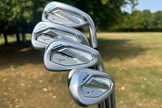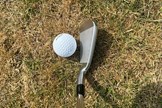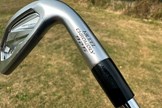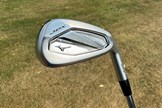The next generation: The Mizuno JPX 925 Hot Metal iron Review
Last updated:
-
At a glance
- TG Rating
- Owner Rating
-
Pros
- Consistent distance across the face
- Extra height makes this iron incredibly playable
- Can fit a wide range of golfers
-
Cons
- The sound is not as soft as Mizuno claim
What we say...
Golfers are used to irons that go further. Finding an iron that gains you distance while also stopping quickly on the greens is less common – do Mizuno have the answer?
There’s a common argument with Game-Improver irons that’s been given with every new release in the category. The framing may vary depending on who’s making the point but it breaks down to this: stronger lofts make the ball go further but you always lose out with height. It may be true with some GI irons, but there’s a new technique being used in the construction of the new Mizuno JPX 925 Hot Metal irons that may make that argument null and void.
Last generation’s JPX 923 Hot Metal is a tough act to follow. when it arrived in 2022, it was seen as a true Mizuno golf club within the more forgiving category, offering looks and feel more like a classically designed head but with modern materials that benefit golfers who struggle with ball-striking consistency.
Fast forward two years and Mizuno have released the 925 family, which looks to improve upon a formula that has been one of the company’s most successful to date.
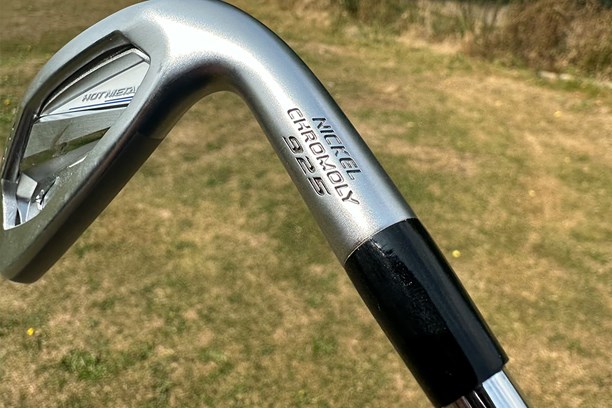
Higher, Further, Faster
The engineers at Mizuno have, for the first time for the JPX line, used Multi-Material Construction in an attempt to redefine how we expect these kinds of irons to play. Utilizing tungsten weight in the mid and long irons, the 925 Hot Metals – whether the standard, the Pro, or the Hot Metal HL – have been created to maintain ball speed while creating a steeper landing angle. Tungsten, a heavy metal, is used to pull mass lower in the head, bringing the Center of Gravity lower with it.
Mizuno says that this change means that they can include the stronger lofts that will still see the distance you expect but increase the apex height and launch angle of your shots. The ball speed gained also helps you achieve a higher flight on the course, and this aspect of the head is as close to illegal as it can get with the return of the Nickel Chromoloy saw in 923.
The chromoly blend has been enhanced this year with Mizuno’s new CORTECH Contour Ellipse Face. Angled from low heel to high toe, where the majority of misses will occur, the 1.2mm multi-thickness creation is 30% thinner than before, helping you gain an advantage wherever you might strike.
Max Speed, Max consistency
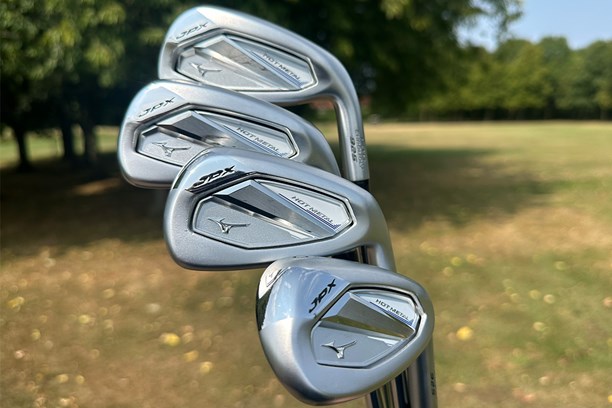

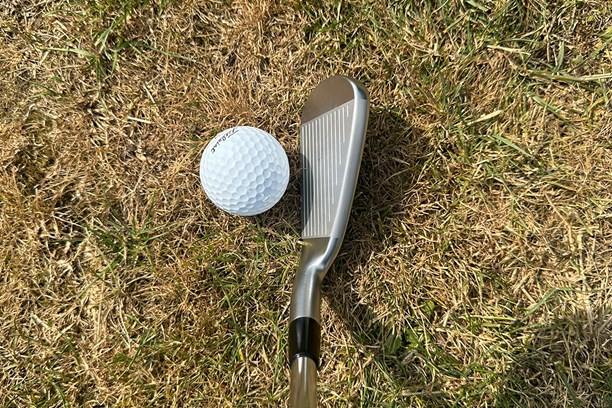
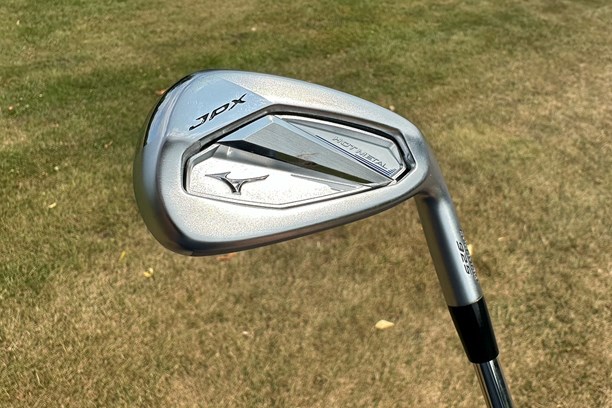

Pros
- Consistent distance across the face
- Extra height makes this iron incredibly playable
- Can fit a wide range of golfers
Cons
- The sound is not as soft as Mizuno claim
| Lofts | 4-PW / GW / SW |
| Stock Shaft | Nippon NS Pro 950 Neo / UST Mamiya Recoil DART ESX |
| Stock Grip | Lamkin UT+ |
| Left Handed? | Yes |
- CORTECH Contour Ellipse Face
- Multi-Material Construction with Tungsten Weighting
- Chromoly 4140M
- Seamless Cup Face
- Harmonic Impact Technology
- White Satin Brush Finish
From my time with the Hot Metal, I’m pleased to say it’s lost nothing of its strength; power is here for any that want it, with a flight that reminds more of my driving iron than a typical mid-iron.
That’s not to say I mean flat or low. On a launch monitor, I tested these against the 923 Hot Metal and saw 1.2mph more ball speed (impressive, considering the material is ultimately the same) but with a 0.8º increase in launch angle. This number combination resulted in four yards of carry distance gained, but with seven more feet of height to come into the greens with.
Equally as important, the Ellipse design, along with the new 360º seamless cup face technology kept my misses tight for front-to-back dispersion, an element that shouldn’t be undersold when considering the golfer these irons are aimed at. But distance and control are not the only elements to consider, especially as this is a Mizuno-made golf club…

Resonating with the audience
When you invest in a set of Mizunos, there comes a certain expectation. Golfers want to see clean looks with a timeless look to them, but the sound is equally important. Mizuno themselves say that feel relates more to the sound of your equipment than it does from vibrations that travel into your hands, certainly something they’re not wrong about.
With that in mind, the 925 Hot Metal features Harmonic Impact Technology. This translates into head geometry engineered for ideal feedback. The technology utilizes Acoustic Sound Ribs to stabilize the top line, providing rigidity that fine-tunes the resonation and improves feel. These ribs are backed up by a Sound Bar that changes sound pressure to remove certain undesirable frequencies. You can see the bar on the rear of the club head and it’s been designed to take out any ‘clicky’ sounds you’d normally associate with this style of iron.
Despite Mizuno’s hard work, I’ve found the reality to fall down with this performance aspect. While I’m not expecting the smoothness of Mizuno’s headline butter knives, the Pro 241, with all the work that they’ve done to innovate in this space, the 925 hasn’t hit the mark for me.
This is not a reflection on the performance, I’ve seen some demonstrably better numbers from the Hot Metal as we’ve seen, but striking these irons hasn’t been the subtle noise that I was hoping for. The power of the head is reflected in the sound with a loud echo coming after impact. I wouldn’t say this is any different from another iron in this category, such as Callaway’s Ai Smoke, but after seeing and hearing Mizuno’s claims regarding feedback I’ve come away a little disappointed.

Reflections
The JPX 925 Hot Metal is a great iron. It offers the same impressive power as the 923 did but makes gains where Mizuno have targeted, with additional launch increasing the playability of this iron beyond that of a simple distance-first iron set.
To look down at, the top line isn’t ludicrously wide and the sole feels like it straddles a good middle ground between bouncing off the floor and getting ‘stuck’ into the floor. The badging on the back is close to the previous Hot Metals, with simplicity at the forefront, but you never see too much cavity at address, even in the longest irons.
Comparing short irons and long irons on the golf course, the consistency in apex height is a serious selling point for any iron let alone a game-improver. Knowing you’re going to see the same flight going from a 5i to a 7i to a 9i means more predictable run out and release from your irons when attacking into greens – essential for playing good golf and shooting better scores.
My only letdown is the feedback. If Mizuno hadn’t made a point regarding how they’d worked on the sound and vibration, I doubt I’d even have raised it as an issue. There’s nothing between these and other iron sets from the category, in that they sound powerful on contact. But when you tell me I should get a softer, tighter feel from a new iron, I expect it. It’s not enough to lose Mizuno points, as this is down to my personal preference, however, I’m not going to be recommending this club to anyone wanting something along the lines of Mizuno’s forged back catalog.
For everyone else who knows not to expect a forged blade comparative, I’m happy to recommend what might be the fastest and highest game-improver irons on the market today.
About the author

Lewis Daff
Lewis Daff joined the Today’s Golfer digital team in 2024, having spent more than a decade in both big box golf retail and independent stores, working as a club fitter and builder.
Experienced with every level of golfer, from beginner to professional, he has achieved Master Fitter and Builder status with most major manufacturers, including Mizuno, Taylormade, and Callaway, helping him to cement both a wide and deep knowledge base. Lewis specializes in Clubs, Shafts, Training Aids, Launch Monitors and Grips.
In Lewis’ bag is Titleist GT3 Driver (9º) with Fujikura Ventus Black, Titleist GT2 Fairway Wood (15º), Wilson Staff D9 Forged 3-iron, Srixon ZX7 MKii Irons (4-PW), Titleist SM9 Wedges (52º, 60º), Toulon San Diego Putter, and Callaway Chrome Tour Ball.
Talk to Lewis about why steel shafts are now dead and graphite is the only way forward or any other equipment you’d like to debate via his email.
Product Information
Details: Mizuno JPX 925 Hot Metal Irons
RRP: £900 (6-piece set) Steel shafts, £150 per iron
Availability: 4 – PW, GW, SW (RH / LH)
Stock shafts: Nippon NS Pro 950 Neo (s) UST Mamiya Recoil Dart ESX (g)
Stock grips: Lamkin UT+
7-iron loft: 28°
Category: Game Improver Iron
Construction: Multi-Material Construction / Nickel Chromoly




